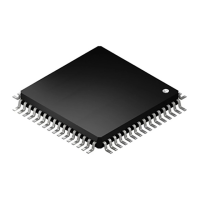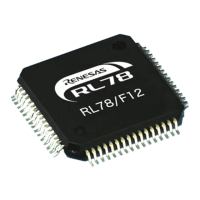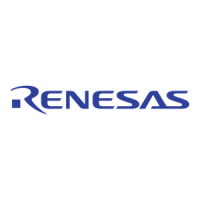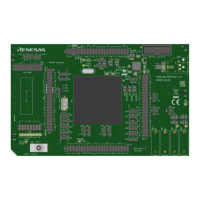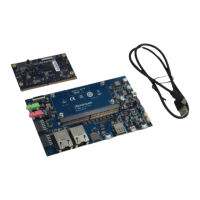E1/E20/E2/E2 Lite Additional Document 3. Notes on Usage
R20UT1994EJ0910 Rev.9.10 Page 40 of 59
Oct.06.23
3.3 MCU Resources to be Occupied
Figure 3-1 shows the areas which are occupied by the E1/E20/E2/E2 Lite for debugging.
These areas (shaded sections) are used for debugging. These areas should not be changed to save the
user program or data. If a change is made, control by the E1/E20/E2/E2 Lite is no longer possible.
However, when "No" is selected in the [Permit flash programming] property of the debugger, the internal
ROM spaces shown in Figure 3-1 and Figure 3-2 are not used (only the internal RAM spaces are used).
When selecting not to permit flash memory rewriting with the debugger's property, also refer to section 3.3.3,
Setting an On-Chip Debugging Option Byte, and section 3.5.2, Operation for Voltages and Flash Operation
Modes Not Permitting Flash Memory Rewriting.
Figure 3-1 MCU Resources to be Occupied (E1/E20)
Figure 3-2 MCU Resources to be Occupied (E2/E2 Lite)
00000h
Security ID area
10 bytes
000C3h
Reset vector area
2 bytes
00002h
Debug monitor area
2 bytes
00004h
On-chip debug
option byte area
1 byte
000C4h
000CEh
000D8h
Debug monitor area
256 bytes
Internal
ROM end
address
Internal ROM
space
Stack area
for debugging
4 bytes or 12 bytes
Debug monitor area
256 bytes
Debug monitor area
10 bytes
Internal
RAM end
address
Internal RAM
space
00000
h
Security ID area
10 bytes
000C3h
Reset vector area
2 bytes
00002h
Debug monitor area
2 bytes
00004h
On-chip debug
option byte area
1 byte
000C4h
000CEh
Debug monitor area
10 bytes
000D8h
Debug monitor area
256 bytes
Debug monitor area
256 bytes
Stack area
for debugging
4 bytes, 8 bytes, or
12 bytes
Debug monitor area
256 bytes
Internal
ROM end
address
Internal ROM
space
Internal
RAM end
address
Internal RAM
space
